Blackout Costs $12,212 Per Megawatt Hour for Colorado Business
The costs of blackouts are real, and they are not spectacular
Last weekend, hundreds of thousands of Xcel Energy customers in Colorado lost power as high winds damaged power lines, and Xcel preemptively shut off the power to 55,000 customers to mitigate the risk of wildfires. Among the customers who lost power were homeowners and small businesses who received little to no warning.
The Denver Post detailed how families experienced entire refrigerators and freezers full of food spoiling, forcing them to refill them at a time when food costs are 25 percent higher than they were four years ago.
Business owners without power lost tens of thousands of dollars due to the outages, which stemmed from lost revenue from being unable to do business and lost products. Restaurant and grocery store owners were hit particularly hard as they scrambled to save as much of their inventory as they could with refrigerated trucks (which, thankfully, run on diesel fuel). Still, in many cases, the damage had already been done.
Thankfully, no one appears to have died from the power outages—unlike Texas during Winter Storm Uri—but spoiled refrigerators full of food, shuttered businesses, and lost wages for hourly workers who could not go to work are all examples of the high cost of unreliable electricity.
Unfortunately, the costs of blackouts are real, and unlike Seinfeld, they are decidedly not spectacular.
The High Cost of Unreliable Power
The most common critique we received from our recent piece, How to Destroy the Myth of Cheap Wind and Solar, was that we did not include the externality costs of carbon dioxide emissions in our levelized cost of energy graph, which you can see below.
The topic of externalities—which we addressed elsewhere in our report on Minnesota’s 100 percent carbon-free electricity mandates— is a common one. However, proponents of increasing our reliance upon weather-dependent wind and solar generators never want to include the virtually unlimited negative externalities that stem from having unreliable power.
For example, we can explore the economic cost of blackouts by examining businesses in Colorado that lost power during the recent utility shutoffs.
The Niwot Market is a small, family-owned, and operated grocery store in Niwot, Colorado, that sells groceries and natural pet supplies and operates a deli and sushi bar. Despite the best efforts of the store owners to obtain refrigerated trucks, the Denver Post reported the market lost $35,000 due to lost sales and thousands of dollars in melted ice cream, frozen deli meat, and other spoiled products.
According to the U.S. Energy Information Administration’s Commercial Buildings Energy Consumption Survey, the average grocery store uses 53.5 kilowatt hours (kWh) of electricity per square foot every year. Using the measuring tool on Google Maps, we calculated the store is roughly 19,552 square feet, and as a result, we estimate it consumes around 1.046 million kWh per year or 119 kWh per hour.
In a phone call with Seth Niwot, a co-owner of the Niwot Market, we learned that the store was without power for 24 hours and confirmed that it experienced around $35,000 in losses. This means the economic damage of interrupted electricity service to the grocery store was $12.21 per kWh, or an eye-watering $12,212.83 per megawatt-hour (MWh), which you can see in the table below.
The costs of lost power at Niwot Market dwarf our “All-In” Levelized Cost of Energy calculations, which calculate the cost of serving load with specific energy resources with a specific system. These figures should help contextualize the large and, in many cases, unbounded costs associated with losing power within the broader energy conversation.
While the blackouts that affected the Niwot Market were the result of attempts to mitigate the risks of wildfires, the Long-Term Reliability Assessment published by the North American Electric Reliability Corporation (NERC) suggests the risks of blackouts are growing in America due to state mandates for carbon-free electricity and Environmental Protection Agency regulations force the premature retirement of the nation’s coal fleet and severely restrict our ability to use natural gas.
These policies, coupled with trillions of dollars in federal subsidies for wind and solar generators, will leave us increasingly dependent upon the cooperation of the weather to maintain grid reliability.
Our modeling of the Colorado Energy Plan for the Independence Institute suggests that overreliance on intermittent generators will result in more blackouts, headaches, and financial losses for business owners across the state. But hey, Generac sales will boom.
Conclusion
The Niwot Market's experience demonstrates that discussions about the externalities of a given generation resource should be summarily ridiculed unless they also include the positive externalities of delivering reliable electricity around the clock.
If they don’t, they are missing a massive $12,212,82 piece of the puzzle.
Thank you for reading Energy Bad Boys!
Please Like, Share, and Subscribe!
Nat Gas & Nuclear's New BFFs by
Surging demand means big opportunities for nuclear and natural gas.Thousands Go Without Power During Alberta's "Brownout" by
Wind Drought Blackout comes to Canada. Meredith is on Substack! Give her a follow!
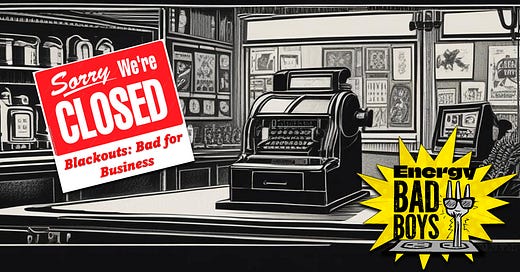




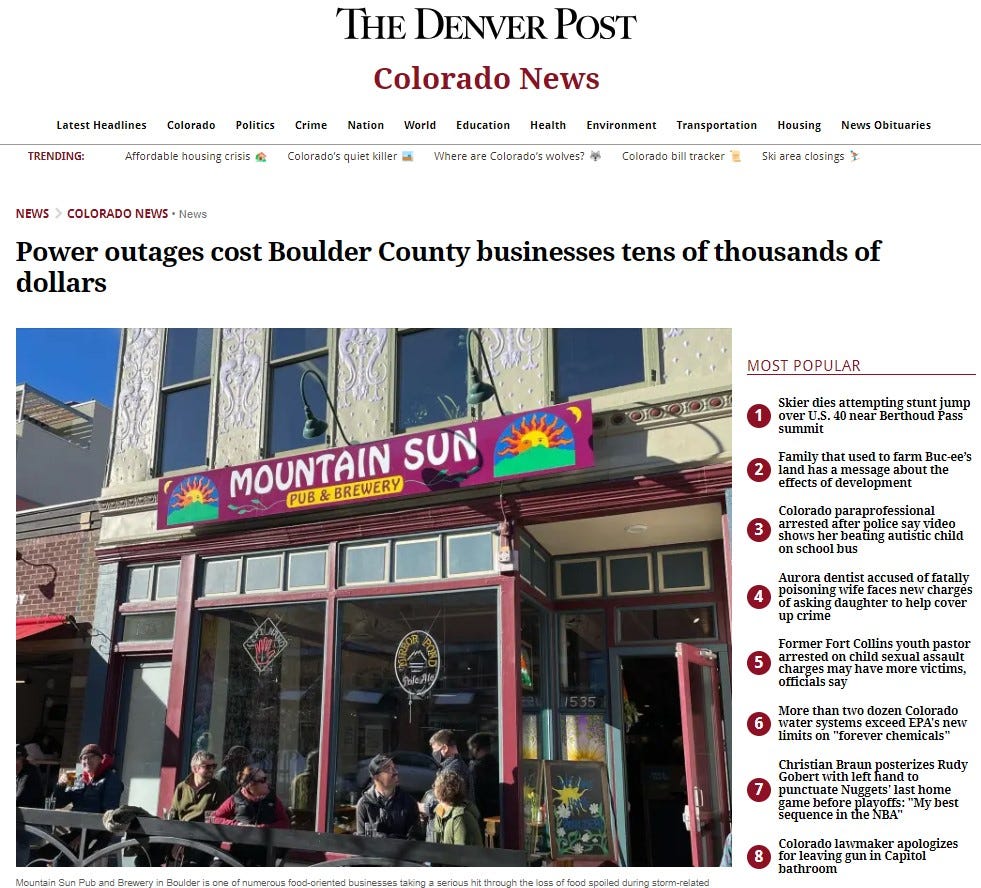
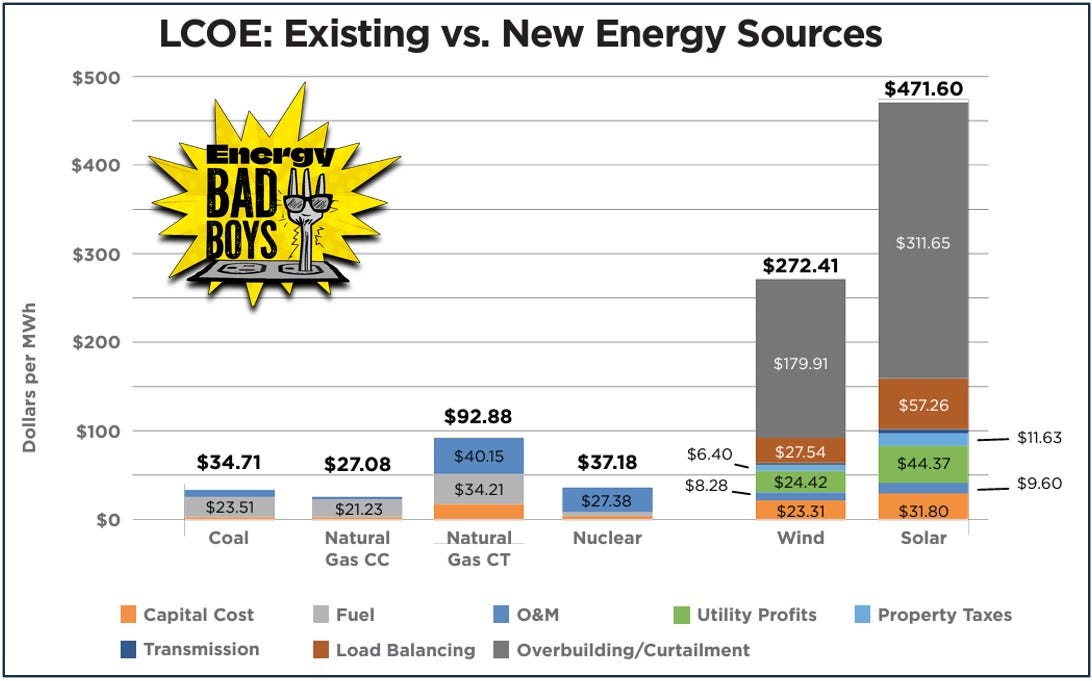

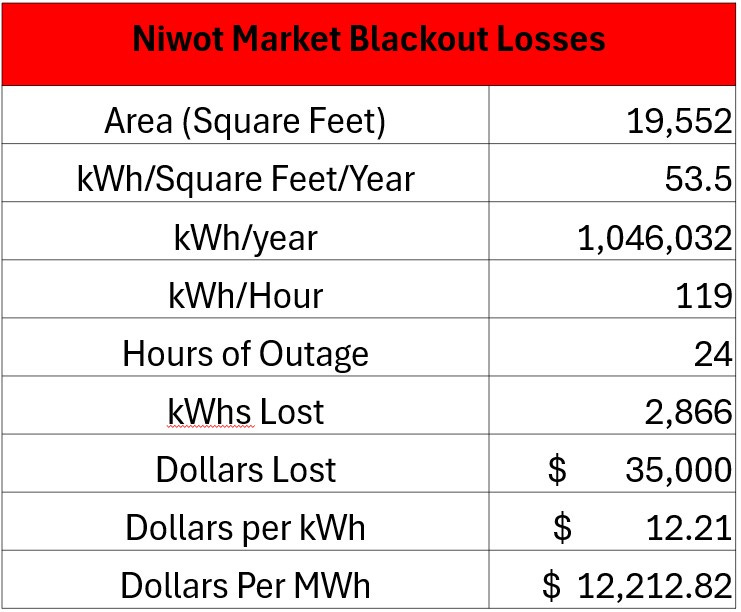
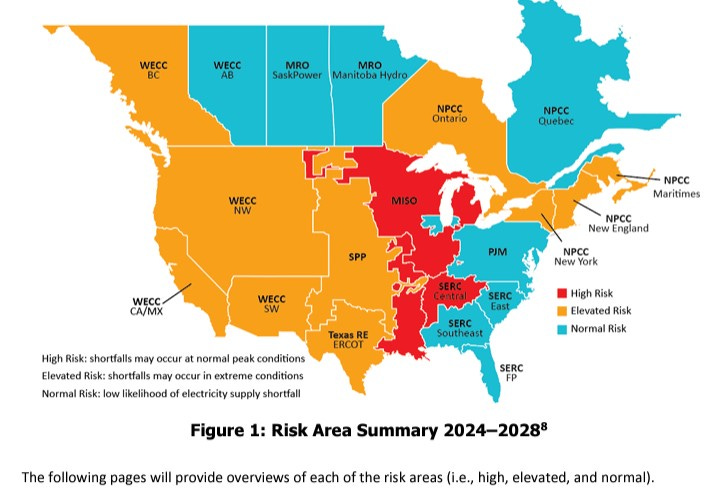

Discussions of externalities of co2 emissions are nonsense unless positive and negative are accounted for.
Positives, without fossil fuels at least 7 of the 8 billion on earth wouldn’t exist.
Maybe let’s ask what they think.
A 24hour blackout in Alberta during -40c, which almost happened January 13th as ALL our ruinables went to zero for a long period would be existential, the only thing worse would be a meteor strike in the center of the province for level of destruction and loss of life.
The costs of blackouts are real, but they are not linear or consistent across time. I live in Minnesota. If I were to lose power for one minute during a mild June night, I would not even notice it until the following morning when some of the clocks in my house would indicate that power was lost sometime during the night. If I were to lose power for three days in late December or early January, I would sit in the dark freezing. My pipes might burst, my home might experience severe damage, and the possibility of death would be real. I have seen cost estimates for winter storm Uri as high as 300 billion and the number of deaths directly attributed to that storm in the hundreds. It’s very likely the actual loss of life was much higher. The longer a blackout, the more costs grow.
As with many things, the costs of a blackout are not uniform. The cost to an insurance agent in a multitenant building may be minimal while the cost to a grocery store may be much higher. The costs to a poor person who has no ability to provide backup power could be substantial while the cost to a wealthier person who can afford an electric generator might be less.
One of the stated goals of more liberal people is helping the poor. Higher electricity, prices and the uneven impact of blackouts work directly against that vision.